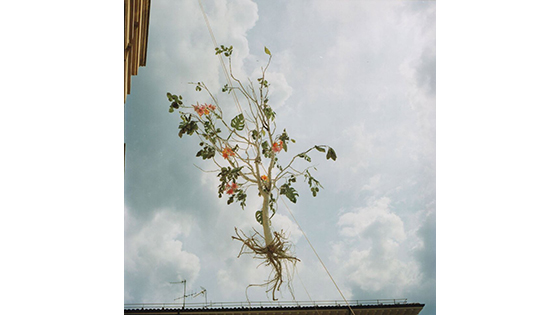In parallelo all’apertura della mostra di Alfredo Pirri, “RWD – FWD”, curata da Ilaria Gianni e ospitata negli spazi del suo studio/archivio romano, in viale dei Consoli 73, la sede di Nomas Foundation è stata utilizzata dall’artista come laboratorio in cui realizzare un nuovo lavoro, appositamente pensato per una delle sale della Fondazione, dal titolo “Quello che avanza”.
Il 25 gennaio, a partire dalle ore 19, l’opera sarà presentata al pubblico a viale Somalia 33 (Roma) in una serata speciale che vedrà la straordinaria partecipazione del musicista Daniele Roccato, il quale eseguirà una serie di brani al contrabbasso, accentuando l’esperienza immersiva del lavoro di Pirri.
“Quello che avanza”, prosecuzione della ricerca sulla luce e sul colore che connota da sempre il lavoro di Alfredo Pirri, è frutto di una ricerca sulla tecnica della cianotipia, che consente di realizzare stampe fotografiche off-camera di grandi dimensioni, caratterizzate da intense variazioni di blu.
L’opera è costituita da 144 stampe che offrono allo spettatore un ambiente avvolgente, dal grande impatto visivo ed emotivo. Di queste, 130 fogli testimoniano le fasi di lavorazione di un’opera e i residui da essa prodotti, mentre 14 sono il risultato di una procedura unica, che vede l’uso di piume appoggiate direttamente a impressionare i fogli preparati con sostanze chimiche ed esposti ai raggi UV. L’evocazione di forme vegetali che si può cogliere in alcune immagini, si collega all’opera della botanica Anna Atkins, pioniera dello studio della flora attraverso cianotipia e autrice del libro “Photographs of British Algae: Cyanotype Impressions”.
Il titolo “Quello che avanza”, scelto dall’artista, sembra riferirsi tanto a ciò che rimane, quanto a qualcosa che si fa avanti, riprendendo il concetto alla base di “RWD – FWD”: un viaggio all’interno dell’opera e del pensiero critico di Alfredo Pirri rivolto al passato, ma proiettato al contempo al futuro.
“Quello che avanza” sarà compresa, in forma rielaborata, nella mostra personale dedicata all’artista, che inaugurerà ad aprile presso il MACRO Testaccio, curata da Benedetta Carpi de Resmini e da Ludovico Pratesi, prosecuzione del progetto “I pesci non portano fucili”.
Tappa intermedia tra le due mostre sarà il convegno “Attraverso lo specchio” ospitato dal MAXXI, Sala Guido Reni, il prossimo 16 febbraio 2017 in cui si affronterà il rapporto tra arte e architettura, riflessione fondamentale del percorso creativo dell’artista.
*english below









